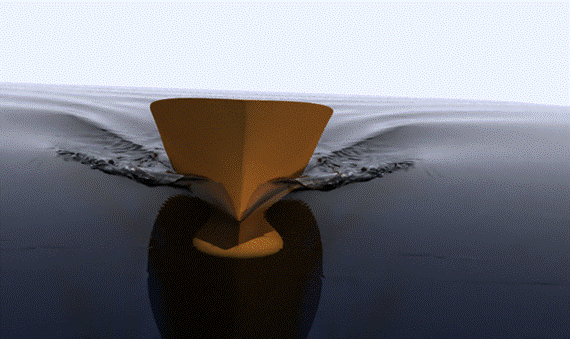Ship bow wave breaking is a common phenomenon during navigation, involving complex multi-scale flow interactions. However, the understanding of this intense free surface flow issue is not sufficiently deep, especially regarding the lack of research on the impact of various aspects, such as scale effects, ship type effects, ship motion effects, ship speed effects, on bow wave breaking. This presentation will firstly introduce the numerical approaches for the prediction of ship breaking bow waves, where the VOF method coupling with RANS approach and Delayed Detached Eddy Simulation (DDES) method will be illustrated in detail. Two different ships, namely benchmark container ship model KCS and navy combatant model DTMB 5415 will be used in the present studies. All the numerical calculations were performed using the in-house CFD solver naoe-FOAM-SJTU, which is developed on the open source platform OpenFOAM. The present numerical approach was validated through measurement data of wave profiles and wake flows obtained from model tests conducted at CSSRC. Grid convergence study was also carried out to find a suitable mesh configuration for the simulation of ship breaking bow waves. The numerical simulations and results discussion will be divided into 4 different categories according to the simulation conditions. First is the study of the speed effects, and the breaking bow waves under different Fr conditions will be analyzed in detail. Then is the motion effect, where different trim angle conditions are considered and significant difference can be observed for the breaking phenomenon. Three different ship scale models, i.e. 1:37.89, 1:52.67 and 1:110, are applied to study the scale effects on ship breaking waves. The ship type effects on ship breaking bow waves will mainly focus on the different characteristics between KCS and DTMB. Flow field results for different conditions, including bow wave profiles, vorticity at various sections, and wake distribution, were presented and analyzed. Through various simulations and comparisons, it is found that trim angle and ship speed have much influence on the breaking phenomenon, and considerable effects of scale are observed on the temporal and spatial variations of the free surface breaking pattern. The findings of this study can serve as valuable data references for the analysis of ship bow wave breaking phenomena.
Prochains évènements
Retour à l'agendaSéminaire Équipe TriboLub
Séminaire + Réunion d'équipe

